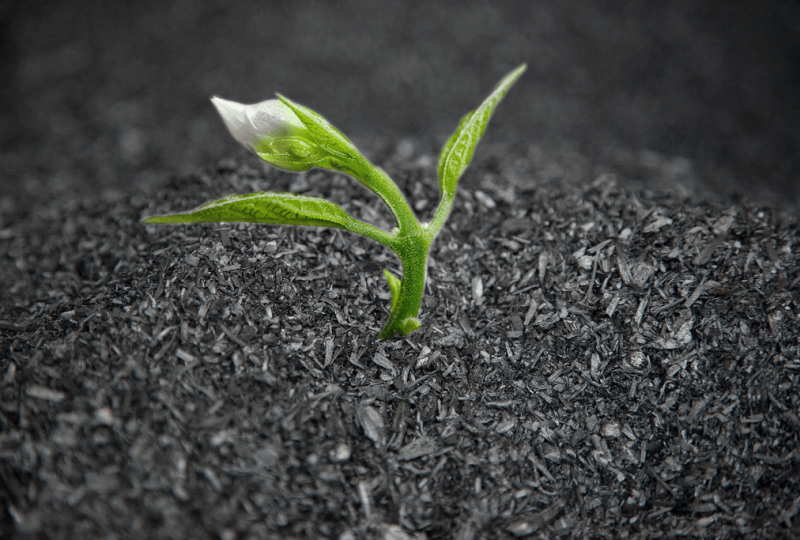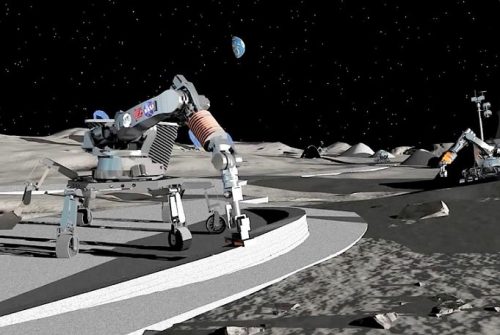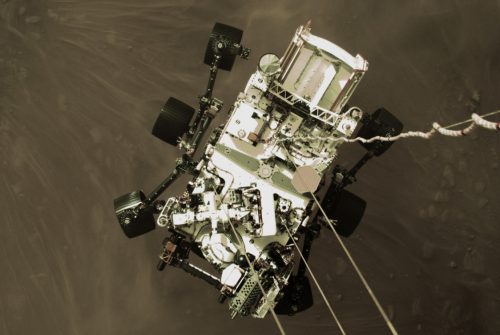The importance of the soil to face the climate crisis
11 June 2019 | Written by Alberto Laratro
Increasing quantities of land are used to feed a growing population, eroding the quantity of forests and green areas, CO2 deposits that, once cut, end up in the atmosphere. Being able to restore CO2 to the ground is essential to combat climate change. We interviewed Danilo Alaimo of Nerabiochar, an Italian company that found a way to do it.

More than 37% of our planet’s soil is used for agriculture, while only 31% is covered by forests. And these two percentages are destined to spread apart more and more: an increasing number of trees, in fact, is cut down to make space for crops, often high yield monocultures such as soy and rice, which have the unpleasant side effect of exhausting the soil resources. The problem is two times serious when we consider that each tree cut contributes to the amount of carbon dioxide, CO2, present in the atmosphere, a value that we cannot afford to grow. Different realities are looking for solutions and one of these could be biochar.
Plants, CO2 stores. Plants have the ability to absorb CO2 from the atmosphere, bringing it into the ground and at the same time releasing oxygen into the atmosphere. This phenomenon, which is called “carbon sequestration”, is good for the environment, at least until the plants are in the ground. If they are cut and then burned or left to macerate, they release the CO2 they have accumulated in their lives back into the atmosphere, contributing to the amount of greenhouse gases in the air and aggravating the climate crisis.
Finding more effective and innovative ways to sequester carbon from the atmosphere to reinsert it into the soil is essential to address the ever-increasing amount of land taken from forests and used for cultivation. While on the one hand efforts are increasingly being made towards reforestation, on the other it is important that substantial seizures of carbon are also carried out in the cultivated fields. This need was met by an Italian company, Nerabiochar, which, through the production of biochar, has developed an efficient and effective method to do so.
The Biochar. Biochar is obtained from wood through a high temperature and low oxygen thermal process, it is a material with many uses and that could help in the fight against the climate crisis, even in almost unexpected ways: “we all know that one good percentage of greenhouse gas emissions is caused by intensive farming – explained the head of research and development of Nerabiochar Stefano Caro – biochar, can be taken by animals and therefore, if used on farms, there is an improvement in the welfare of the animal and a reduction in its gas emissions since it acts as a sponge ”.
To learn more about this material, we asked President Danilo Alaimo to tell us about the Nerabiochar.
What is biochar?
Biochar, also called vegetable carbon, is a matrix that derives from wood chips, wood processing waste. Charcoal has a number of benefits and special purposes. Through our technology, we have succeeded in obtaining a very pure material, which has no pollutants, unlike classic coal.
How is biochar used and what are its benefits?
Biochar has many uses, but first of all, it is born as an agricultural soil conditioner: fertilizers are divided into fertilizers and soil conditioners, fertilizers are those that you put into the soil to supply it with nutrients, the soil improver is what fix its structure. The biochar, once placed in the soil, has a particular porosity, so it allows a high bacterial settlement: it can be called a home for bacteria. In addition, it retains water and releases it slowly along with a series of minerals of which it is composed. In the growth tests, we have seen that on average the plants grow 100% faster, so a very important result. Obviously, the data changes from crop to crop, it is not a panacea for all ills but offers this possibility.
What role does biochar play in the fight against climate change?
Since the industrial age was born, human beings do nothing but take carbon from underground and put it into the environment, with consequent pollution. What is it that holds carbon back? Plants, which are real carbon batteries. Only that if plants are cut and burned or left to decompose, they release this carbon again in the form of CO2 or other greenhouse gases in the air. Biochar, to be used for agricultural purposes, is put underground: at the moment when it is returned to the ground, the carbon is physically returned to the ground.
You mentioned that there are other uses besides agriculture, what are they?
Biochar can also be used for water filtration. Furthermore, we are exploring two very interesting sectors, the pharmaceutical and the food sectors. We are not yet structured to attack this market, we still need to understand what the parameters for the ASL are: even if we already respect the chemical parameters we do not know what the production parameters are. What we do know is that at the European level for the food purpose you must have a maximum content of PAHs, which are the hydrocarbons contained within the biochar, below 4 parts per million, we are below 0.500.
Therefore, ours is a very pure product: we have developed a specific technology to produce biochar that is giving excellent results.
What is this new technology?
We started with a rotary kiln, an instrument that is on the market to dry wood chips, and we perfected it by studying a production cycle that allows us to have a purer product. We succeeded through the experience we developed thanks to Solara energy, another company that is part of our group that has been investing in the biomass sector for 5 years. Furthermore, the contribution of our research and development manager, engineer Stefano Caro, a brain returned to Italy, who specialized in the sector in Norway and Finland, who learned the secrets of this material by studying and using it for years.
All this today allows us to have an Italian product, obtained from certified wood, with very high purity, obtained from the processing waste of those who produce quality chips for cogenerators. We gave these scraps, which would otherwise be merely burned in boilers along with the rest of the biomass, a second life, turning them into a primary asset. A single product brings together many qualities, it is a virtuous project.





